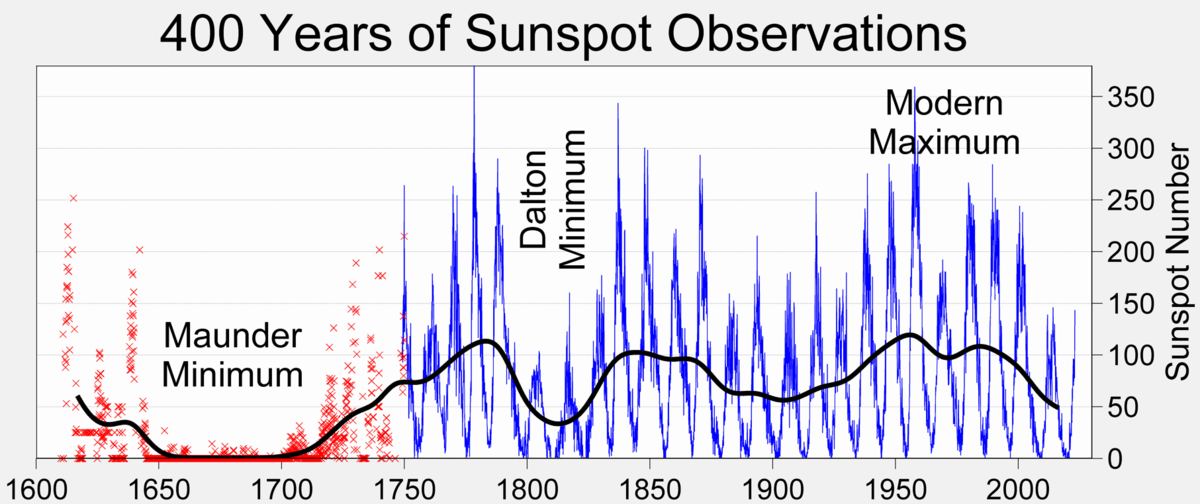Maunder Minimum
The Maunder Minimum was a period of low sunspot activity (a quiet sun). This low activity was correlated with a cooling period that caused crops to fail and had many impacts on the human economy.
During Solar Max, huge sunspots and intense solar flares are a daily occurrence. Auroras appear in Florida. Radiation storms knock out satellites. Radio blackouts frustrate hams. The last such episode took place in the years around 2000-2001.
During Solar Minimum, the opposite occurs. Solar flares are almost nonexistent while whole weeks go by without a single, tiny sunspot to break the monotony of the blank sun. This is what we are experiencing now
Although minima are a normal aspect of the solar cycle, some observers are questioning the length of the ongoing minimum, now slogging through its 3rd year.
“It does seem like it’s taking a long time,” allows Hathaway, “but I think we’re just forgetting how long a solar minimum can last.” In the early 20th century there were periods of quiet lasting almost twice as long as the current spell. (See the end notes for an example.) Most researchers weren’t even born then.
Hathaway has studied international sunspot counts stretching all the way back to 1749 and he offers these statistics: “The average period of a solar cycle is 131 months with a standard deviation of 14 months. Decaying solar cycle 23 (the one we are experiencing now) has so far lasted 142 months–well within the first standard deviation and thus not at all abnormal. The last available 13-month smoothed sunspot number was 5.70. This is bigger than 12 of the last 23 solar minimum values.”
In summary, “the current minimum is not abnormally low or long.”
The longest minimum on record, the Maunder Minimum of 1645-1715, lasted an incredible 70 years. Sunspots were rarely observed and the solar cycle seemed to have broken down completely. The period of quiet coincided with the Little Ice Age, a series of extraordinarily bitter winters in Earth’s northern hemisphere. Many researchers are convinced that low solar activity, acting in concert with increased volcanism and possible changes in ocean current patterns, played a role in that 17th century cooling.
For reasons no one understands, the sunspot cycle revived itself in the early 18th century and has carried on since with the familiar 11-year period. Because solar physicists do not understand what triggered the Maunder Minimum or exactly how it influenced Earth’s climate, they are always on the look-out for signs that it might be happening again.
Source: NASA


